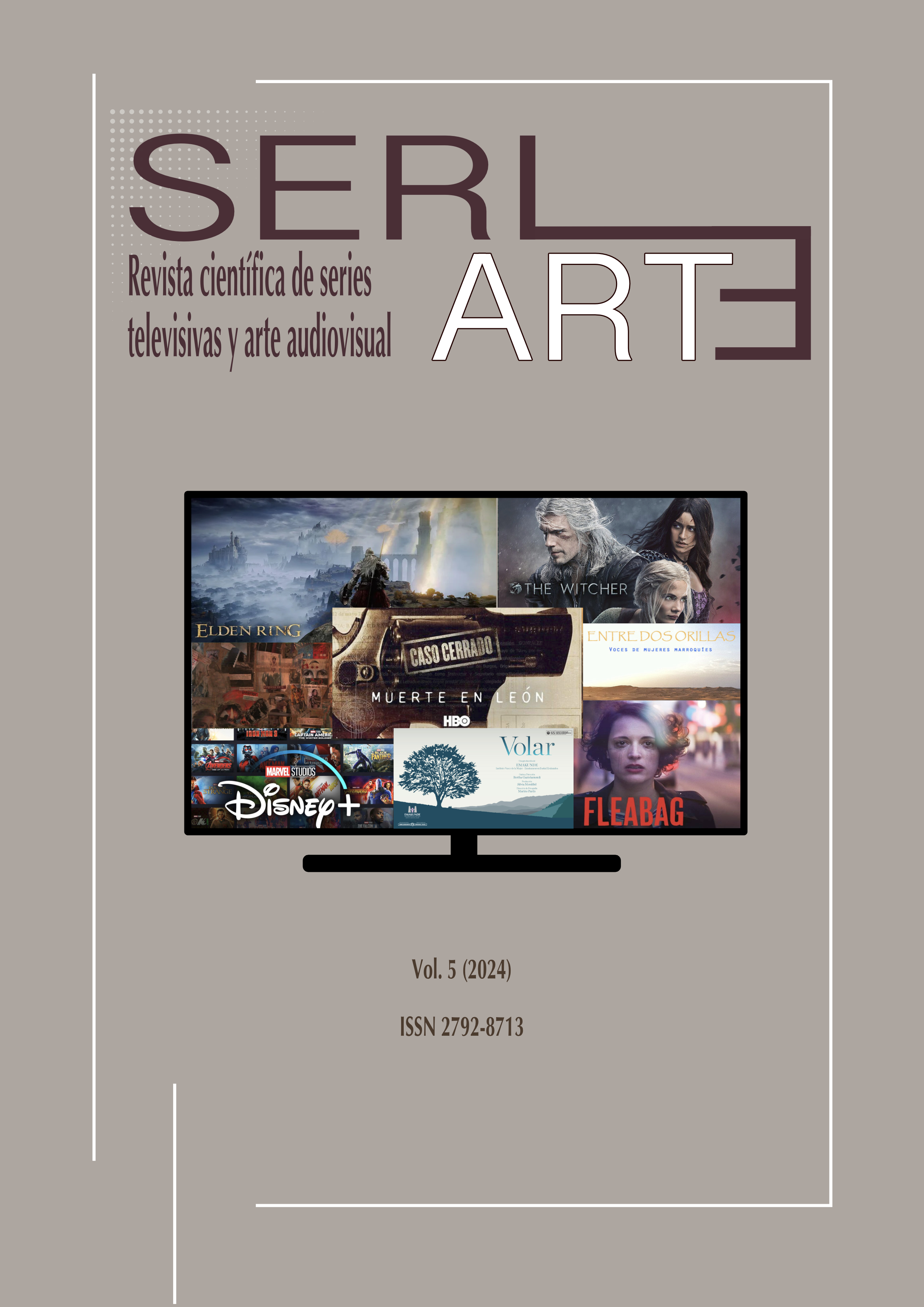Superheroes in transit Disney-Marvel's Series
Main Article Content
Abstract
Today, superheroes inhabit our cultural artifacts through narrative objects that we could consider transmedia: comics, movies, literary narratives, or video games. They have transcended what we have called superhero narrative: the main popular genres have thus ended up encountering the superheroic. Despite the various mutations that the concept “individual” has undergone over the centuries, the truth is that heroes have never left our fantasies. But the superhero has eliminated the traditional mythical space and magical time to circumscribe his adventure to today's society. The eight series of the Marvel Cinematic Universe, premiering on Disney Plus (2021-2022), offer, molding to the patterns of different genres and subgenres, a new contraction of those time and space. Not only the junguian distance between the shadow and the mask has often been suppressed, but they have also turned the definition of his identity into a narrative. Both this aspect and the industrial conditioning factors —the fact of being at the service of a transmedia narrative— limit the meaning and scope of products that end up working as trailers for future Walt Disney Pictures releases.
Downloads
Publication Facts
Reviewer profiles N/A
Author statements
Indexed in
- Publisher
- Ucopress. Cordoba University Press
Article Details

This work is licensed under a Creative Commons Attribution-NonCommercial-NoDerivatives 4.0 International License.
References
ALARCÓN, Tonio (2011), Superhéroes: del cómic al cine, Madrid: Agapea.
BETANCUR GARCÍA, Marta Cecilia (2010), «Persona y máscara», Praxis Filosófica, n.º 30, enero-junio, pp. 127-143. DOI: https://doi.org/10.25100/pfilosofica.v0i30.3419
BURKE, Liam (2008), Superhero Movies, Londres: Pocket Essentials.
CAMPBELL, Joseph (1949)/(1992), El héroe de las mil caras, México: Fondo de Cultura Económica.
CERVANTES, Miguel de (1605)/(2015), Las aventuras del ingenioso hidalgo Don Quijote de La Mancha, revista digital Lemir, n.º 19, pp. 1-478.
COOGAN, Peter (2006), Superhero: The Secret Origin of a Genre, Austin: Monkey Brain Books.
GARCÍA GUAL, Carlos (2011), Mitos, viajes, héroes, Madrid: Fondo de Cultura Económica de España.
GARCÍA-ESCRIVÁ, Vicente (2018), «El auge del cine de superhéroes y la nueva industria cinematográfica global», Revista Mediterránea de Comunicación, n.º 9(1), pp. 483-491, https://www.doi.org/10.14198/MEDCOM2018.9.1.8. DOI: https://doi.org/10.14198/MEDCOM2018.9.1.8
GILROY, Paul (2014), Atlántico negro: Modernidad y doble conciencia, Madrid: Akal.
HERREROS, Ana Cristina (2010), Geografía mágica, Madrid: Siruela.
JONES, Kent (2010), «Occidente y Oriente… aquí y allí», en MARTIN, Adrian y ROSENBAUM, Jonathan (coord.), Mutaciones del cine contemporáneo, Madrid: Errata Naturae, pp. 99-112.
JUNG, Carl Gustav (1961)/(1999), Recuerdos, sueños, pensamientos, Barcelona: Seix Barral.
MOHAN, Monita (2021), «How Loki Became a Fan-Favorite MCU Character Despite His Villainous Actions», Collider, https://collider.com/loki-popularity-fandom-explained-tom-hiddleston/ (consultado: 15/04/23).
MONBOURQUETTE, Jean (1999), Reconciliarse con la propia sombra. El lado oscuro de la persona, Cantabria: Sal Terrae.
MORRELL, Kyle Paul (2017), Truth, Justice and the American Way (Whatever That Is): Comic Book Superheroes and Political Projection, Chicago: DePaul University.
NEHRING, Daniel, ALVARADO, Emmanuel, HENDRIS, Eric C., KERRIGAN, Dylan (2016), Transnational Popular Psychology and the Global Self-Help Industry: The Politics of Contemporary Social Change, Londres: Palgrave Macmillan. DOI: https://doi.org/10.1057/9780230370869
PARIS, Yago (2022), «Ojo de halcón: Deberes superheroicos antes de Navidad», Cine Divergente, 12 de enero, https://cinedivergente.com/ojo-de-halcon/ (consultado: 15/04/23).
POON, Jared (2009), «What Magneto cannot Choose», en DYER, Ben (ed.), Supervillains and Philosophy, Illinois: Open Court, pp. 53-61.
RIAMBAU, Esteve (2011), Hollywood en la era digital, Barcelona: Cátedra.
ROBB, Brian (2014), A Brief Guide to Superheroes, from Superman to the Avengers, Robinson.
SAMPSON, Anthony (2000), «Funciones y sentido de la cultura», http://cognitiva.univalle.edu.co/archivos/grupo%20cultura/AS/Articulosycapitulos/Funciones%20y%20Sentidos.pdf (consultado: 12/05/2023).
TAYLOR, Charles (1989)/(1996), Fuentes del yo, Buenos Aires: Paidós.
TURZI, Mariano (2021), Cómo los superhéroes explican el mundo, Castellón: Unrated Comics.
VOGLER, Christopher (1992)/(2020), El viaje del escritor, Barcelona: Ma non troppo.
WHITE, Armond (2018), «Black Panther’s Cycle of Hype», National Review, 16 de febrero, https://www.nationalreview.com/2018/02/black-panther-overhyped-race-fantasy/ (consultado: 15/04/23).
ZAVALA, Lauro (2010), «El análisis cinematográfico y su diversidad metodológica», Casa del tiempo, n.º 30, pp. 65-69.






